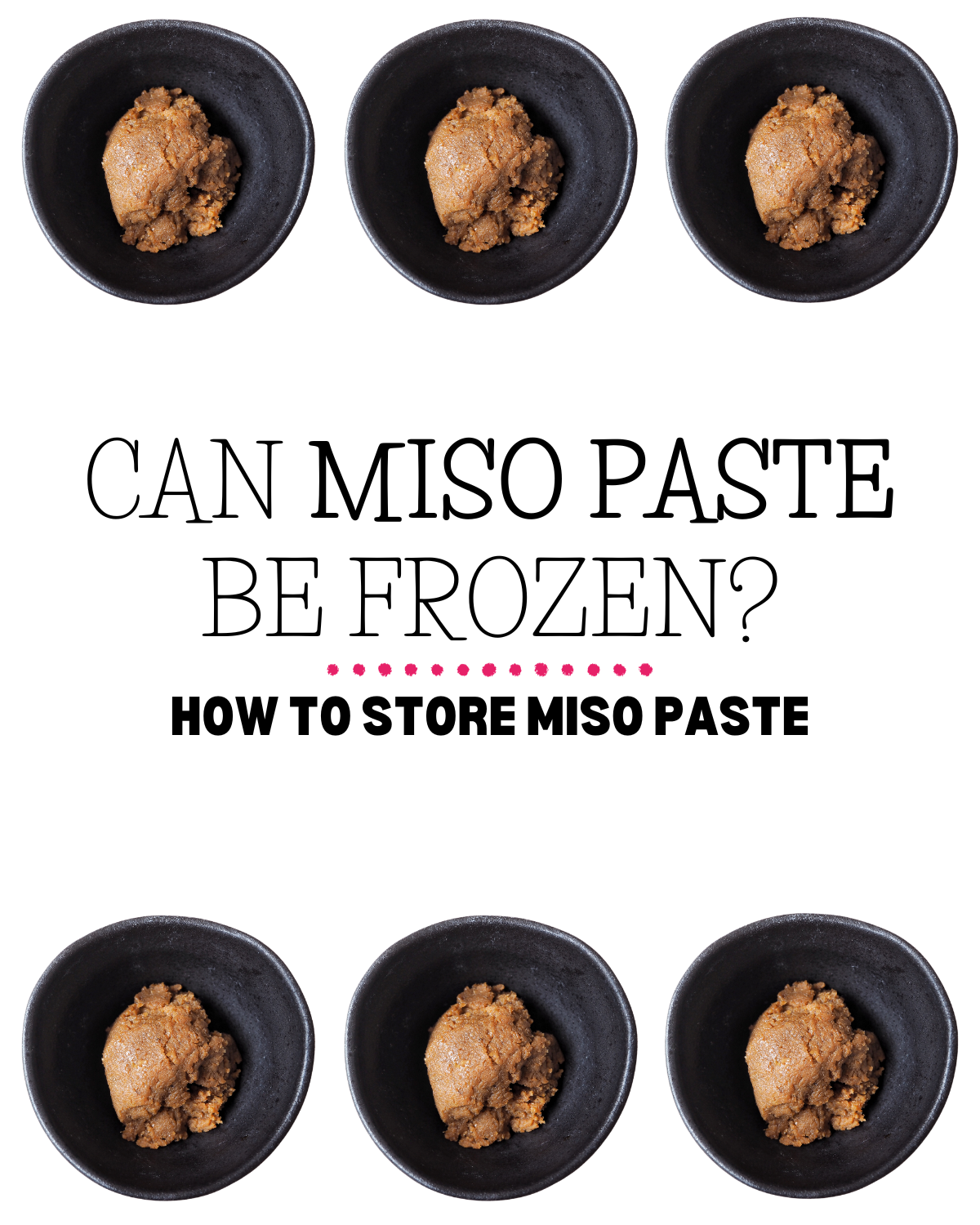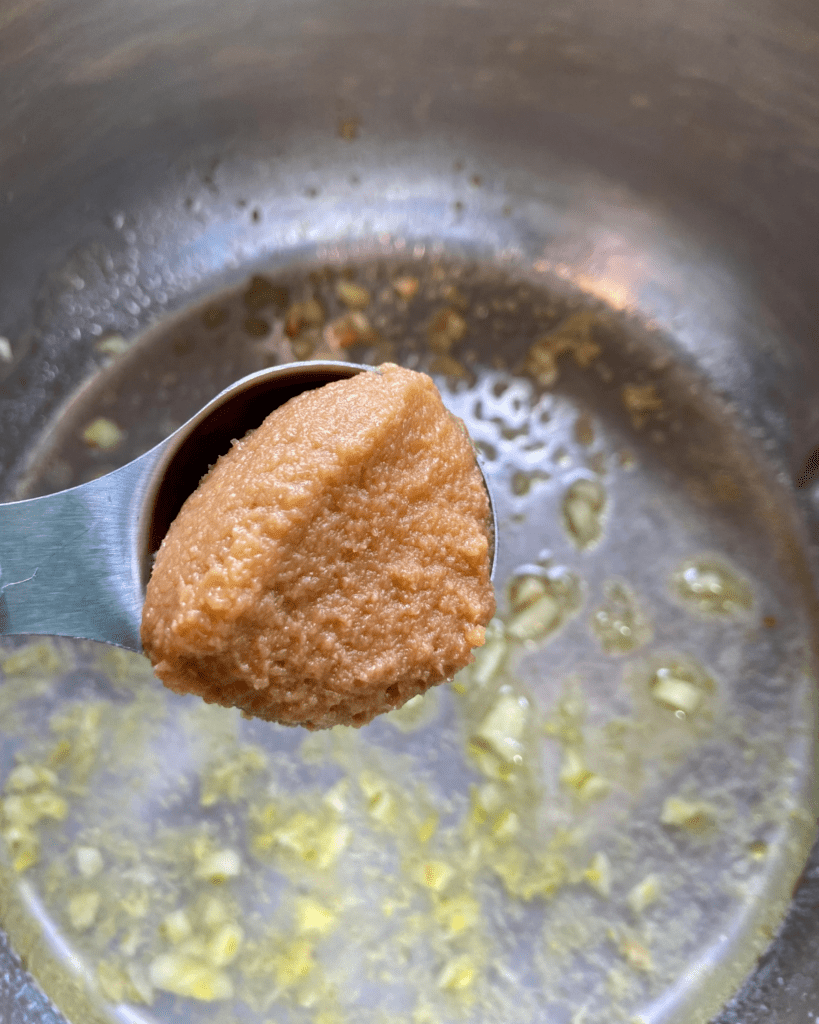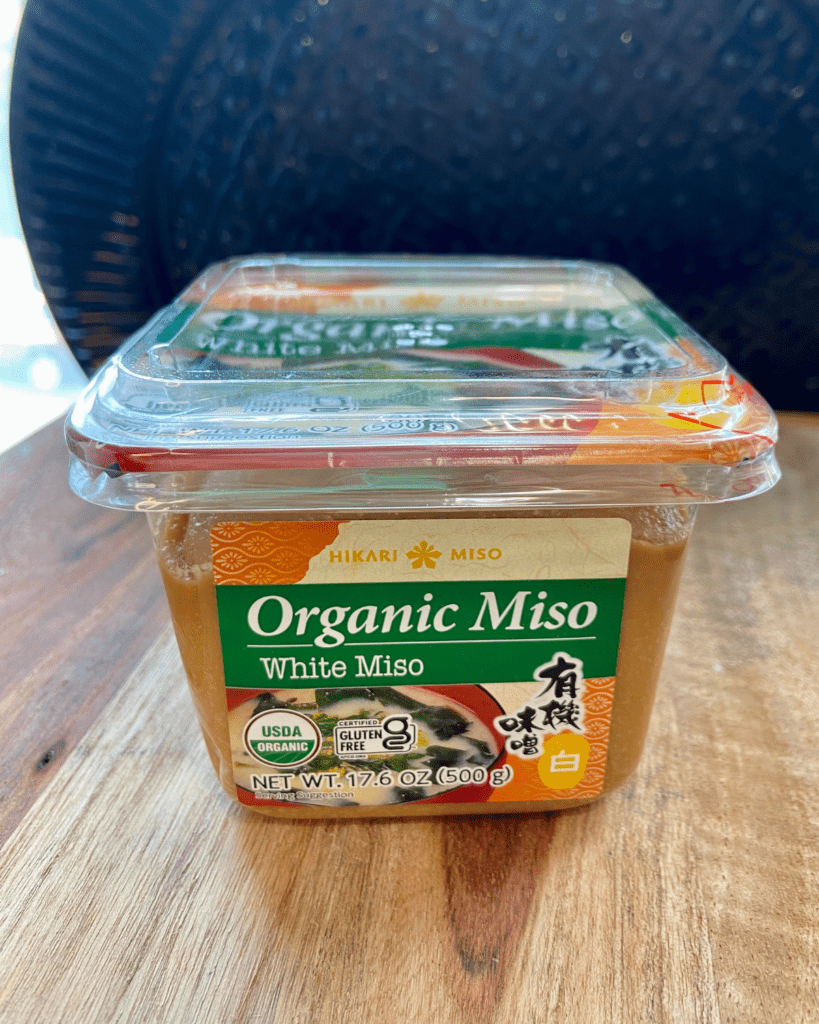Can miso paste be frozen : how to store miso paste

Can miso paste be frozen
SHORT ANSWER: Miso paste will not actually freeze solid, due to its ingredients and lack of water. But you can store your miso in the freezer! Continue reading to find out how to store miso paste, how long it will last, and the best place to store it.
What is Miso paste
Miso is a paste make from fermented soybeans. Miso is made by fermenting soybeans with a culture called koji, which is typically made from rice, barley or soybeans, and salt. Because of Miso’s fermenting process and live bacteria, it is considered a living food.
Miso’s flavor can be described as savory, rich, salty, with a hint of sweet. Miso can be used as the main base of a dish, such as miso soup, or it can be added to many dishes to help boost flavor and bring more complexity to the table.
Health benefits of miso paste
Miso has been enjoyed in Japan since the 1500s and for good reason! Not only does it add a complex, rich, savory flavor to cuisine, it is full of nutrients!
Miso paste contains protein, calcium, manganese, zinc, and vitamin K. Because miso paste is fermented, it is full of good bacteria and is rich in probiotics. This does wonders for your overall health. Miso paste can help improve digestion and can strengthen the immune system. It can also help lower cholesterol and improve you meal health.
Miso paste is high in salt, so you don’t want to over do it. If you are super sensitive to salt, there are low sodium miso paste options available.

Different Types of Miso Paste
Miso paste is made from fermented soybeans, but it comes in a variety of different options.
- Aka Miso / red miso – Aka miso is also known as red miso. This variety of miso paste has a much longer fermentation process than others. Extending miso’s fermentation process creates a miso paste that is darker, saltier, and has a richer flavor.
- Shiro Miso / white miso – shiro miso is also known as white miso. This miso paste is slightly sweeter and less intense than other varieties. Shiro miso has the shortest fermentation process, which gives it the mildest flavor.
- Awase Miso – Awase miso is created by combining red and white miso, which results in a rich, yet lighter flavored miso…not too bold, yet not too sweet and mild.
- Dashi Iri – Dashi Iri is created when you combine dashi with miso during the fermentation process. Doing so creates a more complex and earthy flavor.
- Mugi Miso – Mugi miso is created with a combination of soybeans and barley. Although this variation of miso has a longer fermentation process than most, its flavor is still a bit mild and earthy
- Hatcho Miso – Most varieties of miso are made by combing soybeans, salt, koji, and a grain. Hatcho miso does not include the grain, just soybeans, water, and salt. Due to it’s high concentration of soybeans and longer aging process, Hatcho miso has a red undertone and is extremely thick, dark, and strong.
Can all varieties of miso paste be frozen? Yes, you can store all varieties of miso paste in the freezer.
Where to buy miso paste
You can purchase miso paste at pretty much any major grocery store. You can also find it online, and of course at your local Asian grocery store.

how to store miso paste ( can miso paste be frozen )
how to store miso paste in the fridge
Miso is made by fermenting soybeans, because of this, it is considered a living food and is full of living bacteria. You can store miso paste in several ways, but to maintain its flavor and quality the longest, the best way to store miso is in the fridge. Miso is also a preservative food due to its salt content, giving it an impressive shelf life of up to a year. To properly store miso paste you want to store it in an airtight container.
Miso will go bad much quicker if it is cross contaminated with something and starts to grow the wrong bacteria. Because of this, always make sure you to use a clean spoon when dipping into your miso.
How to store miso paste at room temperature
Yes, you can store unopened and opened miso paste at room temperature. Due to it’s fermentation process and high salt levels, miso does just fine out of the fridge. However, once you have opened your miso paste it is best to move it the fridge. Opened miso paste can last for a little while at room temperature, but it is much more likely to grow bad bacteria and loose flavor.
Note: processed miso paste may not be safe to store at room temperature, so be sure to check the packaging!
When storing miso paste at room temperature, a cool, dark place is the best. In other words, avoid sunlight. When miso paste is stored in sunlight it will darken and loose flavor much more quickly…and it could even make it grow mold!
If you would like to store your miso paste at room temperature, choose a dark, cool place, such as a pantry, and make sure the average temperature is below 68 degrees for best result. But again, the fridge or freezer are considered better options.
can miso paste be frozen / how to store miso paste in the fridge
The big question, can miso paste be frozen? Miso paste does not actually freeze, even when it is stored in the freezer. It may become stiff, but not actually frozen. This is actually a good thing, because you can use miso paste right out of the freezer without needing to thaw it!
Miso paste can be stored in the freezer for up to a year without loosing quality or flavor. For best results, cover the surface of the miso paste with plastic wrap and store in an air tight container.
Although you can store miso paste in the freezer, it is recommended that you do not want the freezer to be below 25 degrees Fahrenheit. Why? Miso paste is a living food. You do not want to completely freeze miso paste because it will kill the live cultures and negatively affect the flavor. This can be a bit tricky, so I personally prefer the fridge for storage.

Shelf life of different types of miso paste
Due to the varying salt levels, different types of miso paste typically have different shelf lives.
- Reduced sodium miso paste : 6 months
- Red miso paste : one year
- White miso paste : 6 months
- Homemade miso paste : one year or more
how do I tell if miso paste has gone bad
As mentioned above, because miso paste is a fermented food with a high salt content, it has a pretty long shelf life. It typically takes 6 months to a year for miso paste to actually go bad. Here are some signs to look out for.
- Sour taste : if you miso paste has a sour taste, it’s most likely due to the fermentation process going on for too long. You can still eat sour miso paste, but you probably will not enjoy the flavor, and may want to just throw it out
- Changing color : as miso paste ferments, it color does get darker. This is called the Maillard reaction. If your miso paste has become darker than it once was, that does not mean it is bad. In fact, many people prefer the taste of more matured miso paste. As miso paste matures, and becomes darker, it’s flavor becomes deeper and less sweet.
- Changing smell : does your miso paste smell different? If so, don’t panic, that doesn’t necessarily mean its gone bad. If your miso paste smells a little like alcohol, that’s ok. A small amount of alcohol occurs during fermentation. If your miso paste smells funky, strange, or wrong…stop using it! You nose knows!
- White mold : is white mold can grow on your miso paste? Don’t panic. White mold growing on the surface of miso paste is common and will only grow on the surface. If this happens, just remove the white mold and about an inch from where it was growing. Then your miso paste should be safe to continue consuming. Note: If you have a reduced sodium miso or a miso paste containing dash stock, mold could be a sign that it has turned! If it smells strange as well, throw it away.

How to cook with miso paste
Miso paste is extremely versatile and easy to use. You can simply toss miso paste in hot water and create a simple broth to sip on. You can add miso paste to your dressings to create a complex, rich flavor.
Miso paste is, of course, wonderful for creating broths for soups and Asian inspired sauces.
It may surprise you, but miso paste can also pair perfectly with baked sweets and even makes a lovely sweet and salt miso caramel sauce! Check out some of these recipes for some miso paste inspiration!





